Shortlist Prix de Rome Visual Arts 2019 Announced
The international jury of the Prix de Rome has selected four visual artists for the shortlist of the Prix de Rome 2019. The nominees are: Sander Breure & Witte van Hulzen, Esiri Erheriene-Essi, Femke Herregraven and Rory Pilgrim.
Each artist will receive a working budget and will be given the opportunity to create new work during a five-month period. The work will be exhibited at Stedelijk Museum Amsterdam from 19 October 2019. Based on the new work, the jury will announce the winner out of the four finalists. The winning artist will receive 40,000 euros and a residency at the American Academy in Rome.
The jury was impressed by the high quality of work from the participating artists. Emphasizing the Prix de Rome’s mission to act as a springboard for artists, the jury selected artists who are not yet fully established in their career but whose practices were seen as focused and well-defined. All finalists contribute to current and relevant conversations in contemporary art. In addition, in their selection, the jury looked for a range of artistic approaches and themes. The four finalists offer, each in their own way, in method, style and narrative, a poetic form of social engagement. The jury is very much looking forward to the projects that the four artists will develop during the forthcoming months.
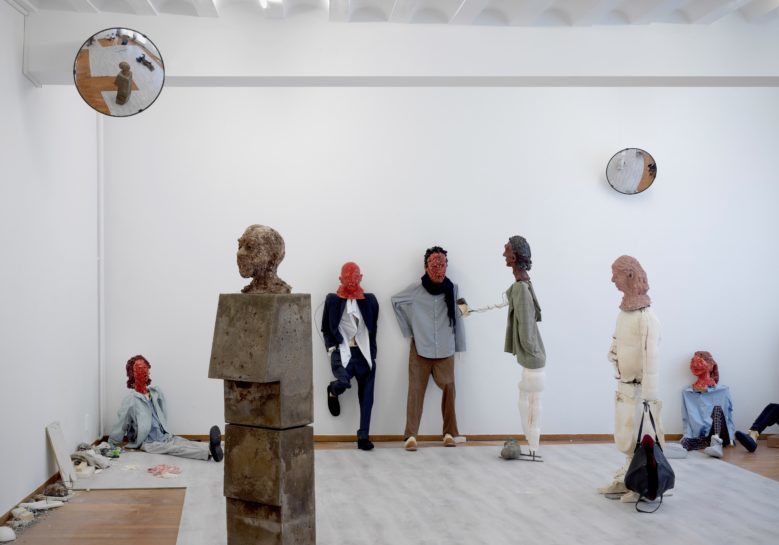 Sander Breure & Witte van Hulzen, the Thief, 2019, installation overview at Marres Maastricht, ceramics, concrete, plaster, textile, wood
Sander Breure & Witte van Hulzen, the Thief, 2019, installation overview at Marres Maastricht, ceramics, concrete, plaster, textile, wood© Gert Jan van Rooij
The collaboration between Sander Breure (1985) and Witte van Hulzen (1984) started ten years ago by making dance performances. Since then, they’ve moved to the field of visual arts as a platform for performances, videos and sculptures. An important source of their work is a dramaturgical analysis of daily life and their observations of human behavior. The jury appreciates the ways in which they develop and formulate their observations to build richly imaginative stories.
Sander Breure & Witte van Hulzen were nominated by Nathanja van Dijk.
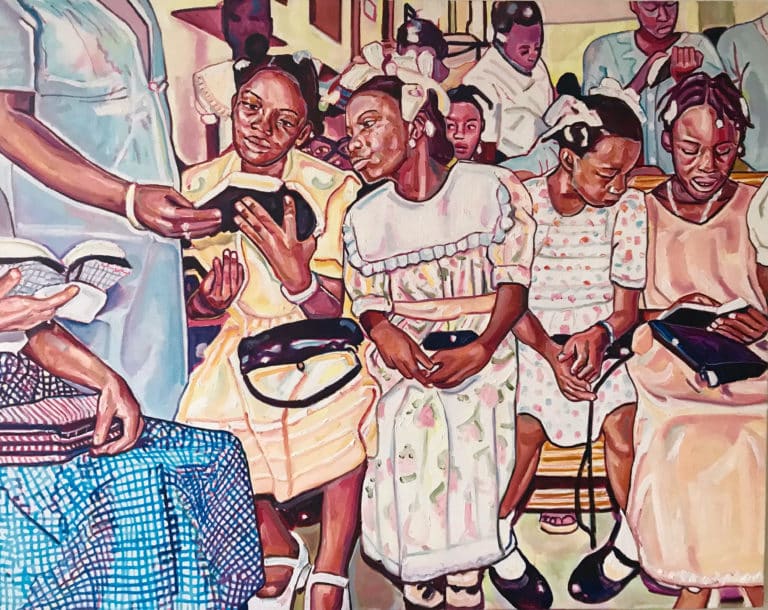 Esiri Eheriene-Essi, The Rituals, 2018, oil on canvas, 170 x 135 cm
Esiri Eheriene-Essi, The Rituals, 2018, oil on canvas, 170 x 135 cmEsiri Erhiene-Essi’s (1982) figurative paintings are colorful depictions of everyday life that unravel implicit commentaries on society and history. Her tableaux incorporate images, objects and documents from her personal archive to voice and render visible forgotten or unseen historical narratives. Her paintings offer new readings of history by combining traditional painterly styles with a modern understanding of society. The jury appreciates the richness and complexities of the artist’s paintings and her ability to activate and engage with urgent socio-political issues in a subtle way.
Esiri Erhiene-Essi was nominated by Ronald Ophuis.
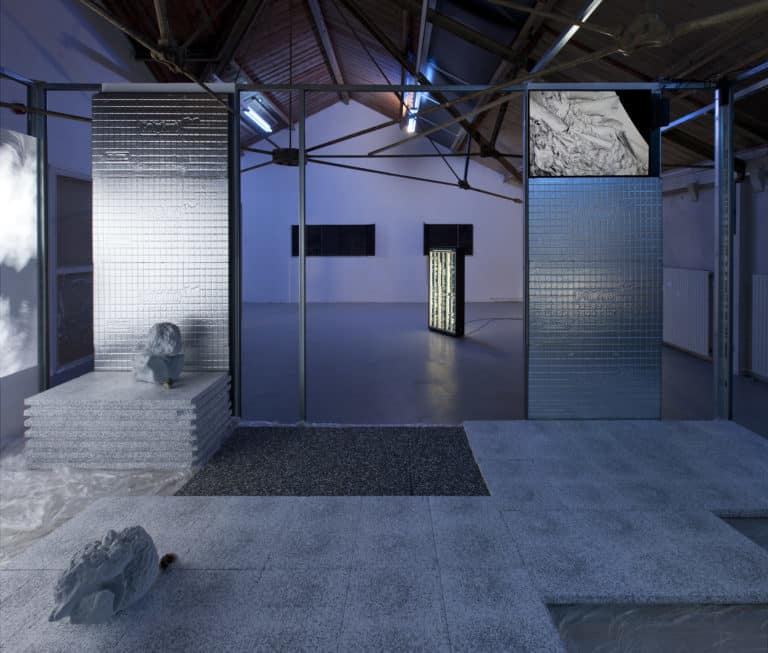 Femke Herregraven, Corrupted Air - Act VI, 2018, Multi-media installation
Femke Herregraven, Corrupted Air - Act VI, 2018, Multi-media installation© Gert Jan van Rooij
Femke Herregraven’s (1982) research-based art practice focuses on financial and geological self-organising systems that influence the course of history. The underpinning research provides input for developing new calculations, speculations and conversations that inform her drawings, writings, scripts, videos and installations. The jury appreciates Herregraven’s focus on new technologies and her ability to translate complex systems into transparent vocabularies.
Femke Herregraven was nominated by Arnisa Zego.
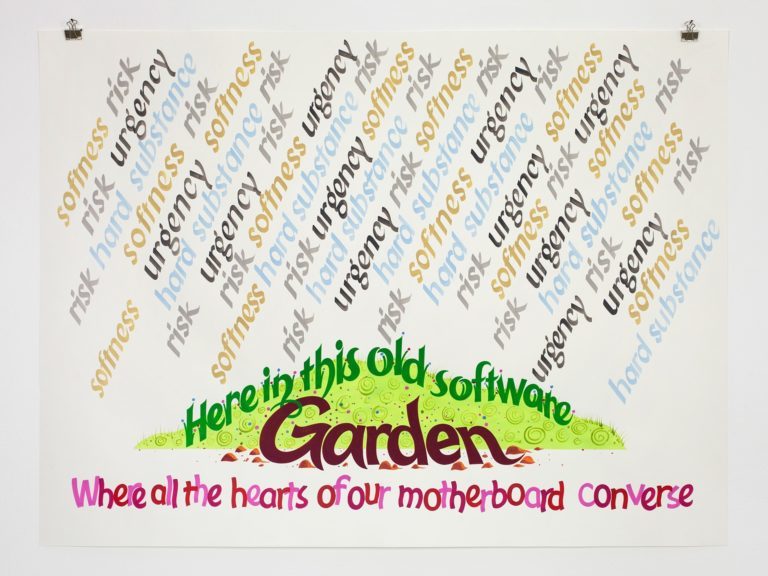 Rory Pilgrim, Propagating Urgency, 2018, Hand Painted Poster
Rory Pilgrim, Propagating Urgency, 2018, Hand Painted Poster© Wytske van Keulen, Courtesy andriesse ~ eyck galerie
Rory Pilgrim (1988) works with a wide range of media including sound, song writing, film, music, video, drawing and live performance. Centred around emancipatory concerns, Pilgrim’s work aims to challenge the very nature of how we come together, speak, listen and strive for social change through sharing and voicing personal experiences. Influenced by the origins and impact of activist, feminist and socially engaged art, Pilgrim works often with several collaborators and communities, through dialogues, collaboration and workshops. The jury appreciates his poetic grounding and his inclusive approach to a range of social issues, including solidarity and a sense of community that emanates from his work.
Rory Pilgrim was nominated by Anke Bangma and Louwrien Wijers.
The jury made its selection from a list of 108 artists, some of whom were proposed by 23 scouts engaged by the Mondriaan Fund. Other artists initiated proposals themselves or were nominated by a third party. The four shortlisted artists were all nominated by scouts.
The jury consists of Lonnie van Brummelen (visual artist, winner Prix de Rome 2005), Amira Gad (curator Serpentine Galleries, Londen), Peter Gorschlüter (director Museum Folkwang, Essen), Frank Koolen (visual artist) and Yasmijn Jarram (curator GEM, The Hague). Chair without right to vote is Valentijn Byvanck (director Marres, House of Contemporary Culture, Maastricht).
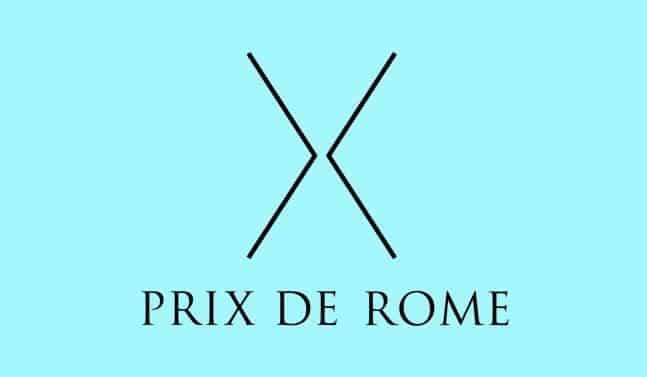
The Prix de Rome is the oldest and most generous Dutch award for visual artists below the age of 40. The purpose of the award is to identify talented visual artists and to encourage them to develop and increase their visibility. The Mondriaan Fund has been responsible for the award from 2012 on. For Prix de Rome 2019 the Mondriaan Fund collaborates with Stedelijk Museum Amsterdam. The publication will be published by Jap Sam Books.











